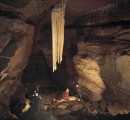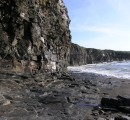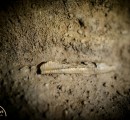Doolin Cave
Doolin Cave (also known as Pol an Ionain) is located beneath a limestone valley. The valley is now blanketed by glacial rocks and clays and probably initially formed during warmer periods before the last ice age. Doolin cave contains one of the longest stalactites in the world that is accessible to public visitors. The cave began its life hundreds of thousands of years ago when very weakly acidic water flowed off the nearby shale and began dissolving the limestone rock.
Discovering the Cave
The cave was discovered in 1952 by J.M. Dickenson and Brian Varley. They were students at the time, charting the caves of the Burren area with their university. They left their group and went exploring on their own. They noticed a small stream that disappeared at the bottom of a huge limestone cliff. They pulled back some boulders and dug their way into a narrow passage and managed to wriggle their way for over 400m until they reached the large chamber that contains the Great Stalactite.
The Great Stalactite
When water travels through limestone it dissolves the calcite and transports it until it reaches a cave. When the water drips through the roof of a cave the process is reversed and the calcite is deposited from the dripping water. While growth rates can vary a lot, typically stalactites grow at about 10cm per 1,000 years, which would mean the Great Stalactite took over 70.000 years to form.




